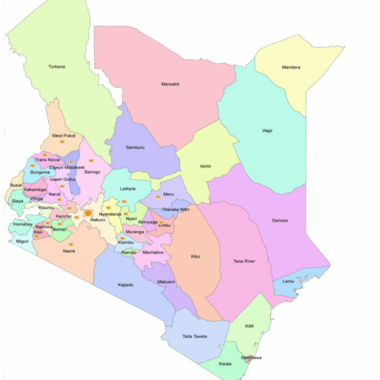Pyrethrum (Chrysanthemum cinerariaefolium) was introduced in the country by white settlers in 1928.
Over the years, the production of the crop increased steadily and during the 1980s and 1990s, Kenya was a global leader in pyrethrum production, accounting for over 70 percent of the global market. The sub-sector supported more than 200,000 small-scale growers, 3,000 workers directly employed by the Pyrethrum Board of Kenya and over 2 million people deriving their livelihood from the industry either directly or indirectly. The sub sector was a major foreign exchange contributor with earnings rising up to Ksh. 2.1 billion in 1996.
From 1938, the pyrethrum Industry was governed by the Pyrethrum Amendment Ordinance of 1938 which created the Pyrethrum Board of Kenya. This was amended in 1964 through the enactment of the Pyrethrum Act CAP 340 of 1964 which established the PBK and the Pyrethrum Marketing Board (PMB). These were later merged through an amendment in 1977 to form one body, PBK. The function of the PBK was to regulate the growing and licensing of pyrethrum in the country. The PBK was also the only body mandated to carry out commercial functions in the industry. In 1963, the PBK in a joint venture with Mitchell Cotts and the Commonwealth Development Corporation established the Pyrethrum Processing Company of Kenya. PBK later acquired the shares of the other shareholders and became the sole owner of the PPCK. In 1973, PBK opened a liaison office, the Kenya Pyrethrum Information Centre (KPIC), in Salzburg, Austria, as a requirement to sell in the European market.
In 2013, the Pyrethrum Act CAP 340 was repealed by the Crops Act 2013.
The enactment of AFA Act No.13 of 2013 the Crops Act No. 16 of 2013, reinforces the separation of functions in the industry. The laws allowed for full liberalization of the industry.
The separation of functions entailed commercial functions under the PPCK as follows;
- Promotion of flower production
- Registration of pyrethrum growers in compliance with regulatory requirements
- Production of planting materials
- Collection, processing and payment of grower dry flowers
- Marketing of pyrethrum and pyrethrum products
- Generation and provision of technical and scientific services


